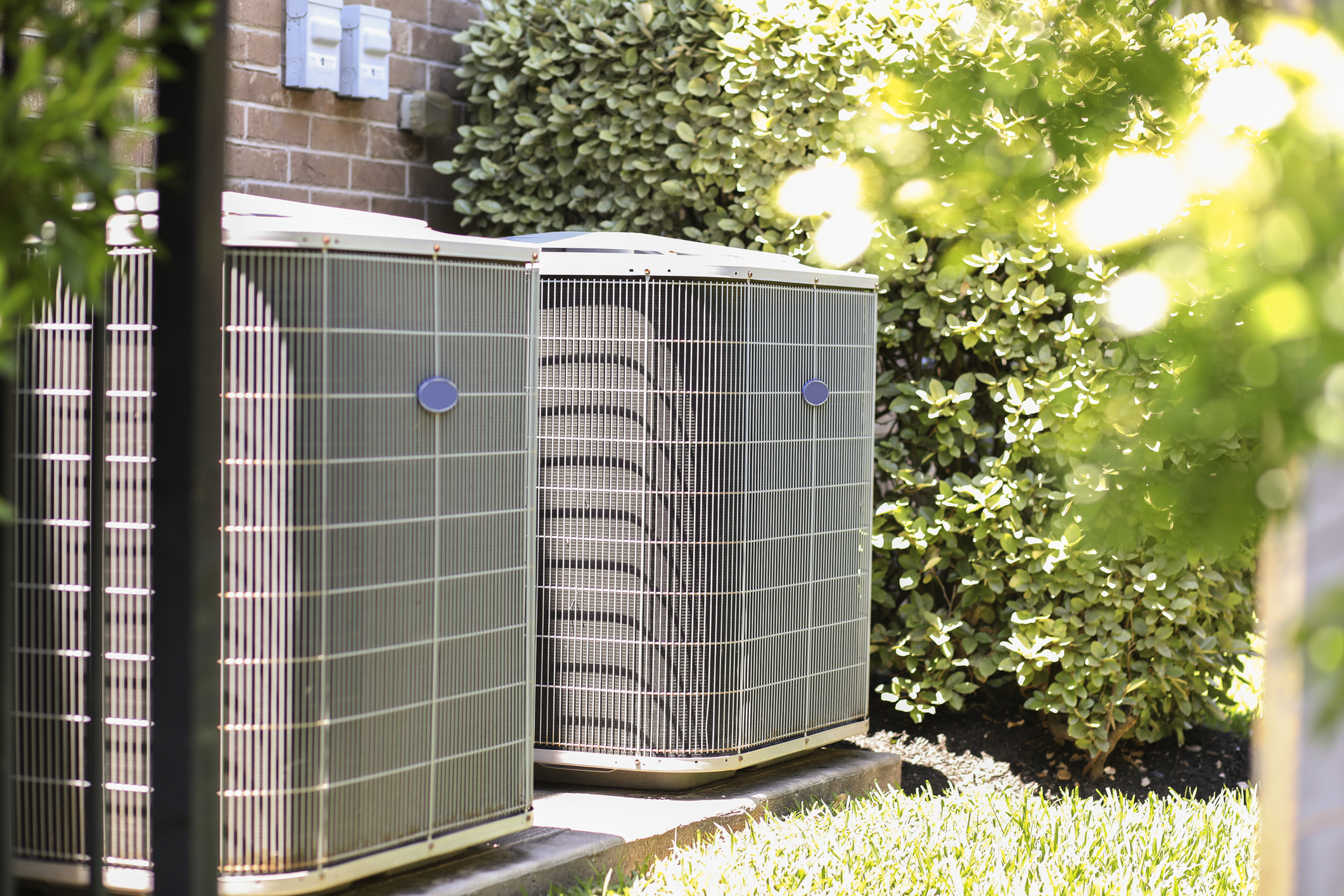
News
Bard’s I-TEC Indoor Unit and ASHRAE’s Guidelines for HVAC in Classrooms
Bard HVAC Classroom Units may help reduce the spread of airborne diseases.
 A recently published ASHRAE technical paper issued to inform and educate consultants, architects and facility managers on mitigating airborne infectious diseases in educational facilities / classrooms provides the following strategy for HVAC systems.
A recently published ASHRAE technical paper issued to inform and educate consultants, architects and facility managers on mitigating airborne infectious diseases in educational facilities / classrooms provides the following strategy for HVAC systems.
These guidelines are provided in an ASHRAE Position Documentation on Airborne Infectious Disease in HVAC Applications, August 2020 and ASHRAE Epidemic Task Force Schools & Universities (Updated July 17, 2020). These documents can be found at www.ashrae.org/covid19.
Summary:
Infectious diseases are spread in three different ways; direct (touching, hugging, etc.), indirect (surfaces, doorknobs, etc.) and airborne (coughing, sneezing, etc.). The focus of this article is to apply ASHRAE’s recommended mitigation strategy for a single HVAC unit design to reduce the spread via airborne transmission. To limit or reduce cross contamination of airborne particles, contaminants, VOC’s, germs, bacteria, mold, viruses, etc., it is necessary to utilize a design strategy with a single, dedicated HVAC unit to serve a single space. Unlike a central rooftop unit (RTU) or central air handler (AHU) that serves multiple classrooms, a unit serving a single space must only provide supply air and return air from that space, while also providing temperature control, humidity control and code ventilation.
In this article, we utilize the Bard I-TEC Indoor HVAC Unit to explain the execution of the ASHRAE guideline to reduce airborne transmission. The I-TEC is a single zone, unitary, packaged, vertical unit in AC or HP configuration (SPVU), certified and listed in AHRI’s Directory.
Strategy:
Dilution Ventilation: Per Wells-Riley equation, C=S (1 – e – lqptiQ), the impact of Q (OA) decreases infectious particles by diluting it with infectious-particle free air. (CDC-2005).
Bard I-TEC units offer various types of ventilation, up to 450 CFM of fresh air with exhaust. A typical 3.5-Ton classroom unit with 1300 CFM can achieve nine total air changes per hour (ACH) and three fresh air changes per hour. This HIGH application priority meets and exceeds any new ventilation requirement to mitigate airborne pathogens and reduce transmission risk.
Air Flush Daily: Mechanical systems should be operated in occupied (including normal peak outside air rate introduced to each space) for a minimum of two hours prior to occupants reentering the building (classroom).
Bard I-TEC units and other Bard classroom units employ the sequence strategy of starting and running the classroom AC units at least two hours before classes start and going to setback mode about four hours after classes end. This strategy also gives teachers, custodians, and maintenance the extra time to perform work in comfort. This control strategy is per Bard’s CompletStat or BrightStat controller scheduled set point set up.
- Typical classroom occupied set points: 75F DB, 55% – 60% RH, OA per code
- Typical classroom non-occupied (setback mode): 78F DB, 55% – 60% RH, NO OA
- Temperature and Humidity: Classroom Design, ASHRAE Design 75F DB and 50% – 60% RH.
Bard I-TEC units feature hot-gas reheat dehumidification (HGRH). The typical I-TEC classroom unit maintains these RH levels with a dedicated, combination, programmable controller. Temperature, humidity and fresh air are controlled per specification and programmed schedule.
Personalized Ventilation:
Small particles may be transmitted through ventilation systems (ductwork), as has been documented for tuberculosis, Q-fever, and measles (Li et al. 2007). ASHRAE recommendation: 1) Supplying clean air to occupants, 2) Containing contaminant air and or exhausting it, 3) Diluting the air with clean air from outdoors and 4) Cleaning the air, filtration.
All these requirements are achieved by the standard I-TEC classroom unit without any additional options or accessories.
Local Exhaust:
Exhaust room air to the outside.
The I-TEC model features various ventilation options with the ability to pressurize or to keep a negative pressure in the room. The optional energy recovery module (ERV) comes standard with a factory setting of 375 CFM outside air and 300 CFM of exhaust air.
Local Air Filtration: Local high efficient filtration are methods of reducing exposure to contaminants indoors and improving indoor air quality. (ASHRAE Position on Filtration and Air Cleaning).
The I-TEC units are single zone, packaged units serving a classroom or a similar single space with their respective high efficiency filters in each unit. I-Tec classroom units come standard with (2) 24” X 20” X 2” MERV-8 filters. Per ASHRAE and School Board Facilities recommendations, the I-TEC unit features optional MERV-13 filters without sacrificing airflow due the unit’s evaporator ECM motor that compensates for the extra resistance or loading by adjusting its speed (CFM) to insure the correct, programmed airflows. The I-TEC’s optional MERV-13 filter will on the average remove a minimum of 75% of particles size of 0.3 – 1.0 micron per these guidelines (ASHRAE).
Room, Duct or Air Handler UVGI:
All UVGI depends on inactivation of disease transmitting organisms and it can be safely deployed in HVAC equipment and ductwork. (Nardell et. al. 2008).
Bard I-TEC units and other Bard models can accommodate these type of UV light accessory devices installed in the evaporator section of the unit. In addition, we also offer Bi Polar Ionization (BPI) that can easily be installed at the supply blower inlet that greatly reduce VOC’s and all indoor contaminants.
In Room Flow Regimes:
Ensure that airflow patterns in classrooms are adjusted to minimize occupant exposure to particles.
Bard I-TEC units come with three optional size acoustical supply plenum boxes. Each supply plenum features supply grilles on three sides. Normally the unit sits on the floor inside the classroom by an outside wall. The duct free plenums’ 4-way vertical and horizontal, adjustable deflectors allow the conditioned supply air to be directed to different areas in the room. The upward pitch on the linear slot allows air to be deflected upwards toward the ceiling and not on occupants.
Differential Pressurization:
Room pressure differentials are important for controlling airflow between areas in a building (Siegal et al. CDC 2005). Adjust building (classroom) airflows to prevent negative pressure, per ASHRAE recommendation.
Normal non-isolation nursing offices in schools, nurse stations, isolation rooms and other potentially airborne infectious isolation rooms are to be kept at a negative pressure with respect to the surrounding areas to contain potential infectious agents.
Other areas like classrooms, halls, offices, etc. are to be kept at a positive pressure to limit infiltration of heat, humidity, VOC’s and other possible contaminants.
Other important features of the Bard I-TEC unit that help maintain a clean, safe and comfortable environment in educational and similar facilities:
- No standing water in the drain pans
- Evaporator constructed of Hydrophilic fin stock with the following advantages: acrylic coating, improved draining and lower re-entrainment of moisture back into the airstream, anti-microbial properties provide microbial resistance to fungal growth and resistance to mold and mildew
- Low sound levels, as low as below 40 dba
- Four ventilation options
- Fiberglass-free insulation
For more information visit www.accuaironline.com. For design assistance contact AccuAir Engineered Products Manager Frank Suranyi, MBA, Member ASHRAE by calling 404-259-0089 or emailing frank@accuaironline.com.














